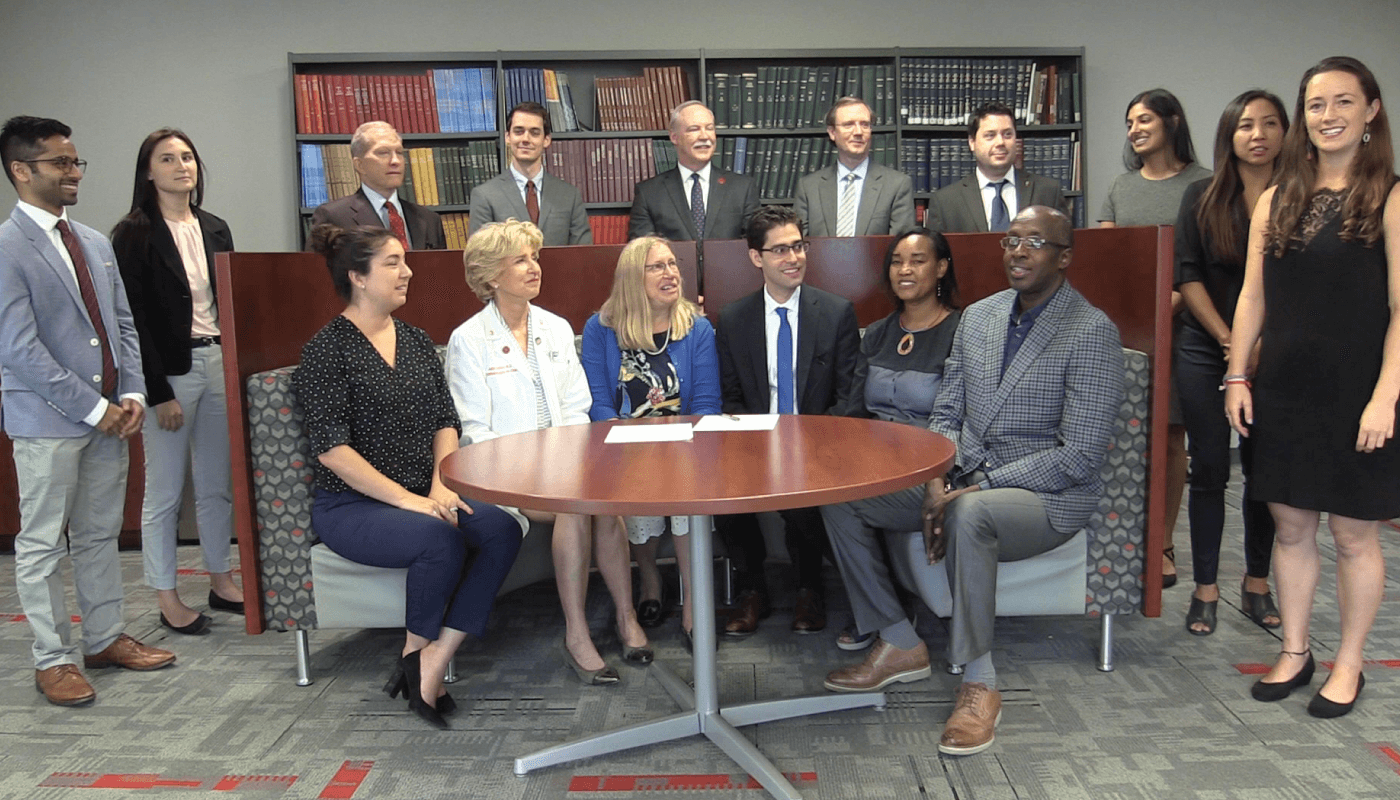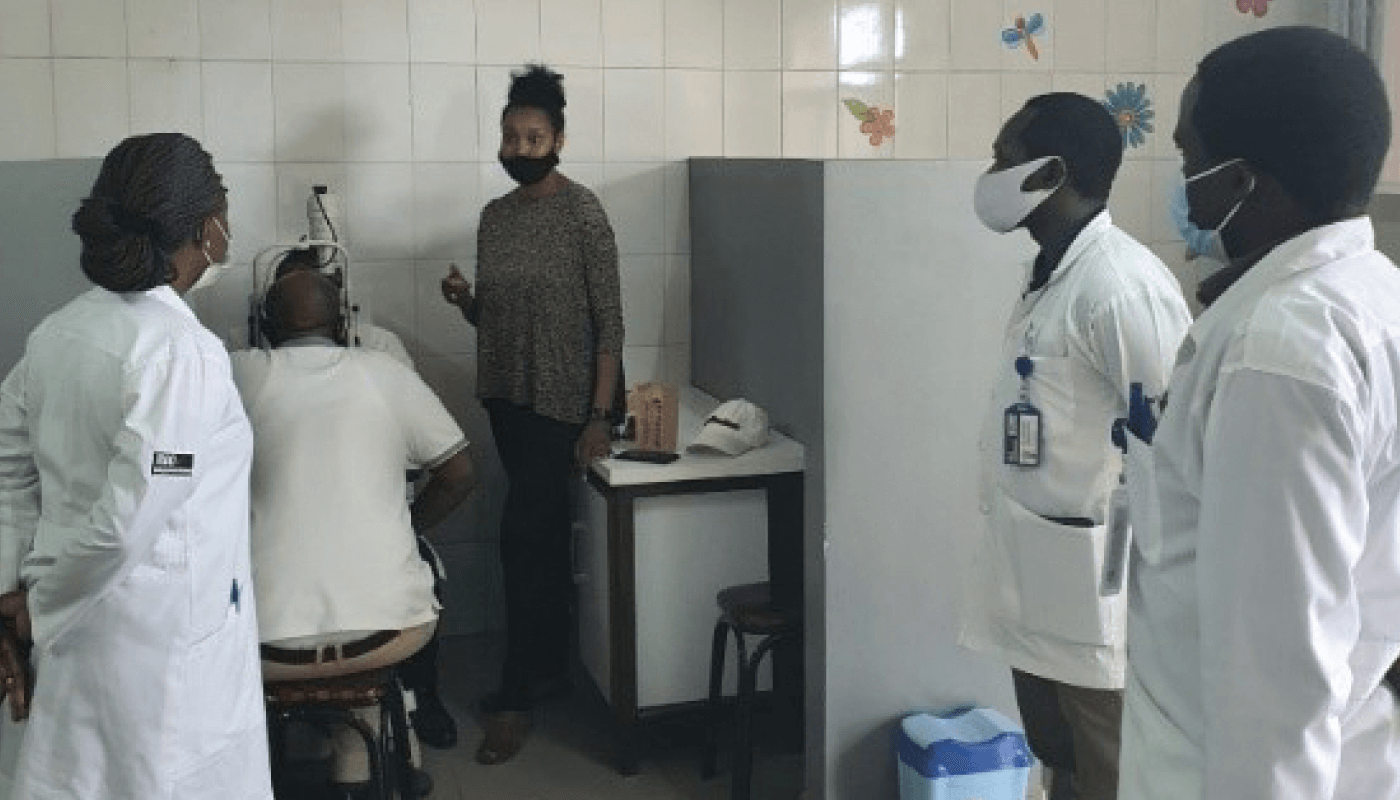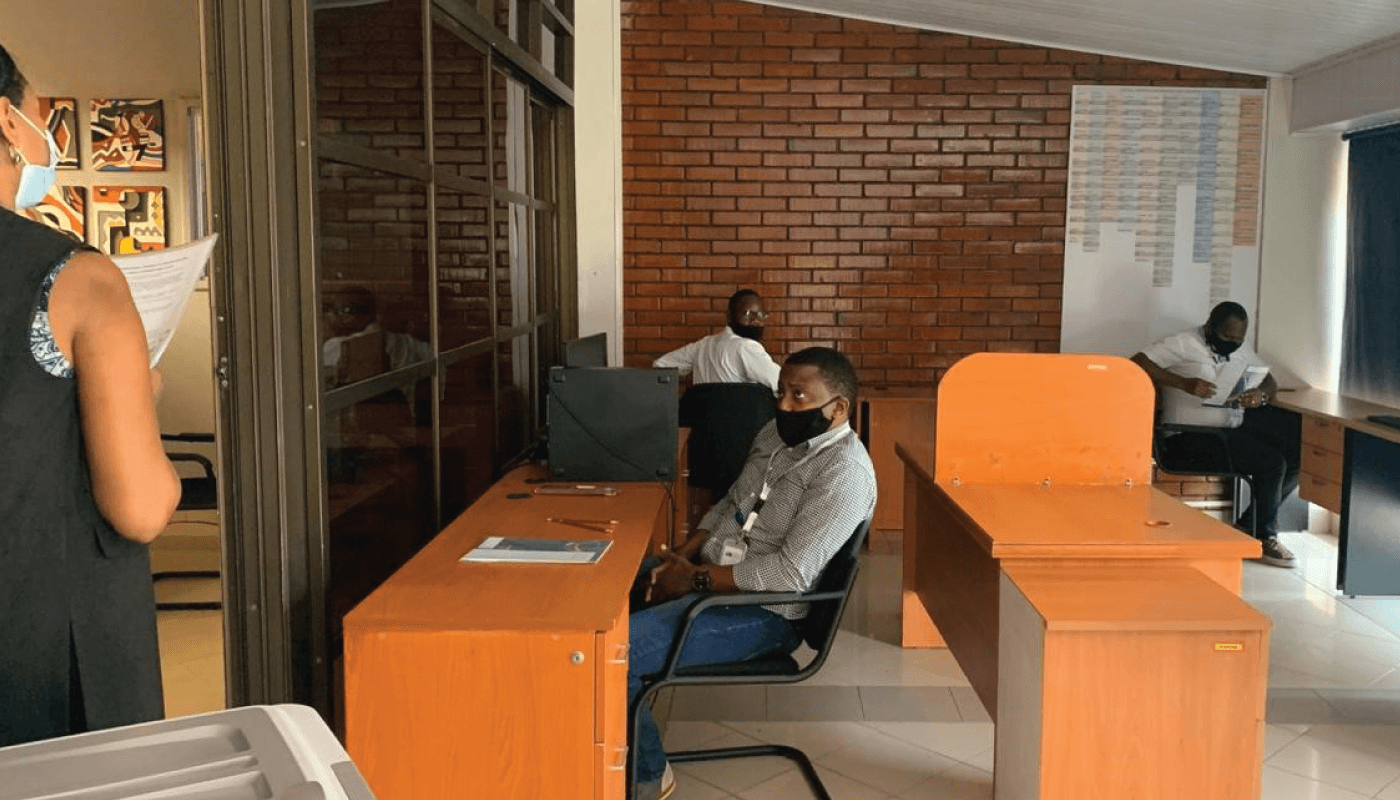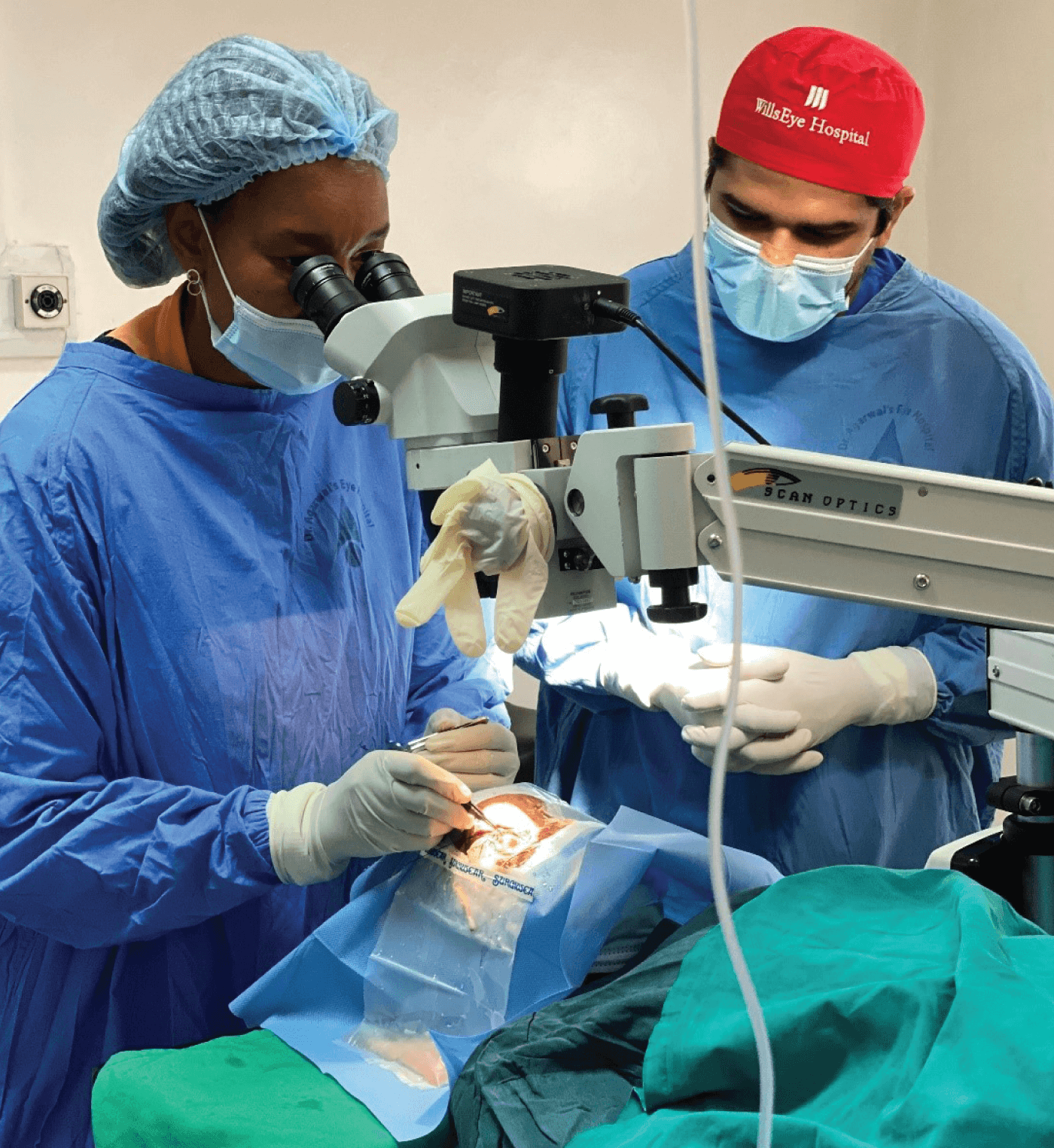
Two simple truths: i) there are currently too many blind people in the world, and ii) there are not enough ophthalmologists – in the right places and with the right skills – to prevent and treat unnecessary blindness. The shortage of ophthalmologists is especially acute in low-resource settings; the World Health Organization (WHO) recommends a minimum of one ophthalmologist per 250,000 people (1), but the number drops as low as one per 500,000 to 1,000,000 in many places on the African continent (2). Compare this to North America and Europe, where one ophthalmologist serves 20,000 people. Fifty-seven countries are considered to be in a health workforce crisis, and 36 of those are in Africa, where an additional 1.5 million health workers are needed.
The VISION 2020 LINKS Program aims to address the lack of ophthalmic human resources by providing a public health-oriented framework that pairs hospitals and training institutions in low and middle-income countries (LMICs) with training institutions in high-income settings to share learning, enhance ophthalmic education, and improve patient care in a reciprocal manner so that both institutions benefit. The LINKS Program has been active in the UK since 2004 through the International Centre for Eye Health (ICEH) at the London School of Hygiene & Tropical Medicine (LSHTM) with great success, and has been conducted in the US via SEE International since 2018.
The VISION 2020 LINKS Program establishes and fosters needs-based partnerships that “provide training and support to develop the expertise of eye specialists overseas and enable them to prevent more people going blind” (3). It not only involves the subspecialist training of ophthalmologists between the two LINK partners, but also includes the whole eye care team, including mid-level cadres, nurses, management, information technology, and record keeping. In the US, SEE International oversees the LINK partnership between a US academic institution and a LMIC academic program, and in the UK, the ICEH overseas the LINKS partnerships. There are currently 30 active LINKS between the UK and other locations, mainly in Africa, plus two in the US. LINKS have a focus on surgical skills transfer, such as pediatric cataract surgery and vitreoretinal surgery, and clinical skills transfer especially in glaucoma, diabetic retinopathy, and retinopathy of prematurity. Other areas include nursing care, patient flow, finance, management, and leadership. Costs incurred by a LINK are approximately $25,000 per year (4), mainly in travel for the eye care teams to each other’s institutions for hands-on training.
The LINKing process
The first step is simply for the eye care staff in a low-resourced hospital or training institution to want a LINK. A Needs Assessment form is then filled out to start to identify the key priority needs of the LMIC partner and to enable the LINKS Program Manager at ICEH or SEE International to identify a suitable matching institution in the UK or USA.
Next is the establishment of a LINKS Steering Group with the main stakeholders for both institutions and then two formal Needs Assessment Exchange Visits; the UK or US institution eye care team visits the host institution, and the host institution visits the US or UK. After the exchange visits, they develop a Memorandum of Understanding (MoU) and Activity Plan to state the intent to work together. Alongside the MoU, a three-year Activity Plan sets out who is doing what, when, for how long, and where the funding will be found. This is signed by senior leaders, such as the CEO and Medical Director of the Hospitals, the Dean of the Medical School and the Ministry of Health focal person for eye care. Once the MoU is signed, the VISION 2020 LINKS Program helps secure funding.
Monitoring of training is done by the LINK Steering Groups of each institution via the Activity Plan. Minutes of each LINK Steering Group Meeting are shared and an Annual Report with a financial and training summary is submitted to the VISION 2020 LINKS Program each year. Equipment, consumables, and training materials are the responsibility of each individual LINK partnership and should be well thought out before training begins.
Though the main objective of the LINK is to enhance training and human resource development, the LINK partnership should ideally enable leveraging of governmental and non-governmental organizations to help in the purchase or donation of equipment and supplies. The funding of the initial Needs Assessment visit is done with the help of the VISION 2020 LINKS Program. Afterwards it is the responsibility of the institution to fundraise. A Toolkit makes the case for fundraising and the importance of the LINKS program, and it also explains whom to ask and how (3).

VISION 2020 LINKS USA
The first two LINKS established in the US – between the Rwanda International Institute of Ophthalmology (RIIO) in Kigali, Rwanda, and Wills Eye Hospital, Philadelphia, Pennsylvania, USA; and between Addis Ababa University (AAU) in Ethiopia and Emory University in Atlanta, Georgia, USA – are good examples of how LINKS work.
Before 2017, Rwanda didn’t have an ophthalmic residency program, so any physician wishing to practice ophthalmology had to travel out of the country for training. Under the leadership of Ciku Mathenge at RIIO and Brad Feldman and Brenton Finklea at Wills Eye Hospital Center for Academic Global Ophthalmology (CAGO), RIIO and Wills both came to SEE International and expressed an interest in a LINK. RIIO had started the first ophthalmology residency program in Rwanda, and they expressed an interest in their Needs Assessment with residency program development, diabetic and cataract tracking programs, research development, and low vision. From here, Steering Groups were formed, site visits made, an MoU and three-year Activity Plan developed. Funding was found (facilitated by SEE International), and an evaluation of the program is ongoing. The three-year action plan can be seen in Table 1, with a more detailed description of ongoing activities in Table 2.
CAGO fellow March 2018
Introduction to clinical skills and diagnostic testing workshop.
Clinical introduction in neuro-ophthalmology.
Suturing course for residents.
Residents and the fellow participated in a cataract outreach in which residents were shown how to perform retrobulbar and peribulbar blocks as well as the basic preparatory / sterile techniques of the OR.
CAGO fellow visit December 2018
Introduction to occuloplastics didactics + exam.
Clinical skills: gonioscopy and Goldmann applanation tonometry.
MSICS and suturing.
CAGO fellow visit February to March 2019
Worked with John Cropsey to educate Ophthalmic Technicians.
Developed lecture series for review of the ICO examination at RIIO.
CAGO fellow visit February 2020
Review session for upcoming ICO exam.
Provided lectures on various basic science topics and daily sets of practice questions.
Fellow provided one-on-one clinical skills development with new class of first year residents.
The second VISION 2020 LINK USA is currently forming between AAU and Emory University under the leadership of Sadik Taju of AAU and Jacquelyn O’Banion of Emory. This partnership’s Needs Assessment is focusing on a retinopathy of prematurity (ROP) screening program and a diabetic retinopathy (DR) screening program. As most travel has been disrupted by the recent COVID-19 pandemic, this LINK is expected to grow in the near future. Currently, Emory is continuing to support AAU resident education through the development of an online lecture and grand rounds database providing AAU residents and faculty access to the same educational activities as Emory residents. Additionally, Emory continues to support Ethiopian residency education with the annual ICO review course. Once COVID-19 permits travel within and between countries, ROP and DR LINKS activity will resume.

There are different ways of thinking about the lack of ophthalmologists in the world. One is through the patient perspective. A patient with avoidable blindness in this world still goes blind even if there is the best treatment in the world for the condition exists, but there is no ophthalmologist available to give that care. This blindness has many consequences: it impacts on income, quality of life, and can even bring early death. That is a harsh reality for someone with a condition as curable as a cataract. Another perspective is from the doctor. There are doctors in low-resource settings taking care of all the glaucoma, cataracts, pediatrics, macular degeneration, glasses, and trauma for a population of one million people. That is a very, very heavy burden to carry. “Train more ophthalmologists!” is easier said than done, but it is the goal of the VISION 2020 LINKS Program to alleviate this burden for the patients and to support institutions that train ophthalmologists where the shortages are most severe. To learn more about putting your institution to work to alleviate global blindness, please visit the websites of SEE International in Santa Barbara, California, and the International Centre of Eye Health in London, UK.

References
- IAPB, “IAPB Africa Human Resources for Eye Health Strategic Plan 2014-2023” (2014). Available at: https://bit.ly/3tgNZIS.
- S Resnikoff et al., “Estimated number of ophthalmologists worldwide (International Council of Ophthalmology update): will we meet the needs?” Br J Ophthalmol, 104, 588 (2020). PMID: 31266774.
- VISION 2020 LINKS Overseas Partners Toolkit (2011). Available at: https://bit.ly/3wUabej.
- International Centre for Eye Health, “VISION 2020 LINKS Programme.” Available at: https://bit.ly/3de9rbV.
